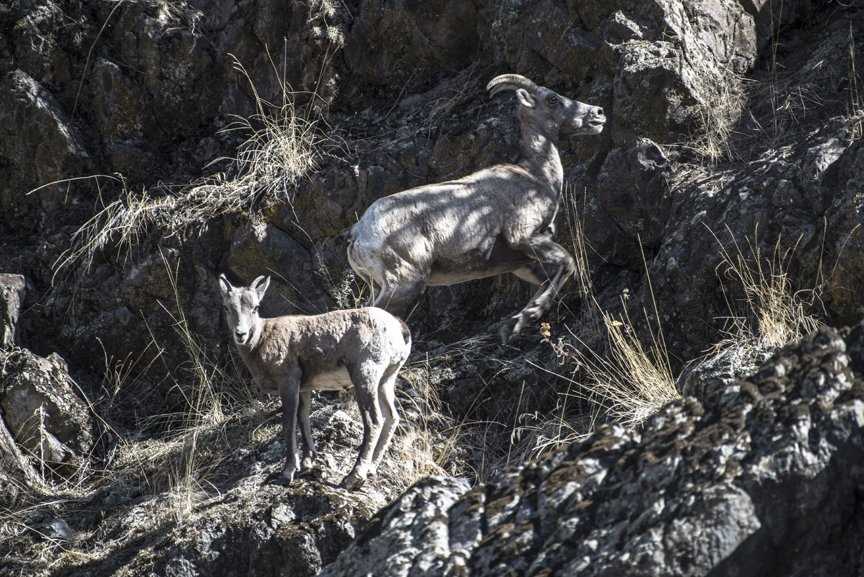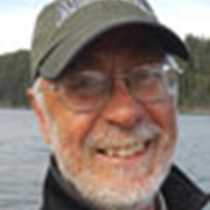Low clouds in the east turned red-violet just before sunrise as the National Geographic Sea Bird was nearing our dock in Clarkston, Washington. As Captain Kay eased our little ship alongside, Bos’n jumped onto the dock and made all of the lines fast. Soon after breakfast we boarded jet boats piloted by Cap’n Chuck and Cap’n Eric and away we went upstream on the Snake River on this gorgeous and sunny morning, bound for wild and scenic Hells Canyon, the deepest river canyon in America. Near the river’s edge flocks of Canada geese and American coots rested on the water. A pair of blue-winged teal flew across the river right in front of our jet boat. Great blue herons stood silent like sentinels on the riverbanks, waiting for hapless fish to swim by.
As we headed on upstream, great walls of layered lava flows loomed above us. These lavas are a part of the Columbia River Basalt Province through which we have been sailing for most of our journey. Stepping up to the horizon high above, the lavas are weathered to a rich brown and trimmed with the buff-colored grasses of autumn. Our first stop was at Buffalo Eddy. Here, we nosed up to the rocks on the shore for a close look at some Native American petroglyphs. These petroglyphs are an enigma. Etched into the surface of the rock, they show creatures and people; it is unknown how many thousands of years ago these were made or who made them. A bald eagle soared overhead against a cerulean sky.
At the confluence with the Grande Ronde River we officially entered Hells Canyon and left the basalts behind for now, as we entered exotic terranes—new land added to western North America by plate tectonic actions. Small beaches of pale sand were scattered along the river shore, sparkling in the sun. The sparkles come from mica flakes in sand delivered to the Snake River by the Salmon River that flows through the granitic Idaho Batholith where it picks up quartz, and feldspar and mica minerals. Meanwhile, Rocky Mountain bighorn sheep were spotted, a majestic ram high on a mountainside and some ewes and lambs near the river.
Stopping for lunch at Garden Creek Ranch, a Nature Conservancy property, we enjoyed a hearty lunch under the trees and on a veranda with beautiful views up and down the river. Here, there were green lawns and a large apple orchard. We were not the only ones who liked it here; wild turkeys and mule deer were also enjoying this oasis of green nestled among the parched hills of autumn. As we proceeded on upstream a pair of great blue herons, with their powerful wingbeats, flew right toward us and passed near our portside.
Not far upstream past the confluence with the Salmon River we reached the narrowest part of Hells Canyon, where dark and rugged walls of rock rise on either side and the river is pinched into a roaring torrent as it rushes pell-mell downstream, shining in the sun. On the rocks along the shore we saw chukars, quail-like birds making their “chukar, chukar” calls for which they are named. One more stop was on the schedule, at Cache Creek Ranch where there was another orchard and green lawn. Here, we enjoyed snacks as well as figs and walnuts fresh from the trees—a pleasant respite. Back on board our jet boats we sped downstream to Clarkston and the Sea Bird.
Our last outing of the day was to the Nez Perce National Historic Park where we learned about the history of the Nez Perce people. Then, on this last evening aboard we enjoyed new friendships and camaraderie with our fellow travelers at the Captain’s Farewell party and dinner.










